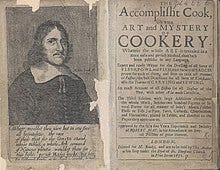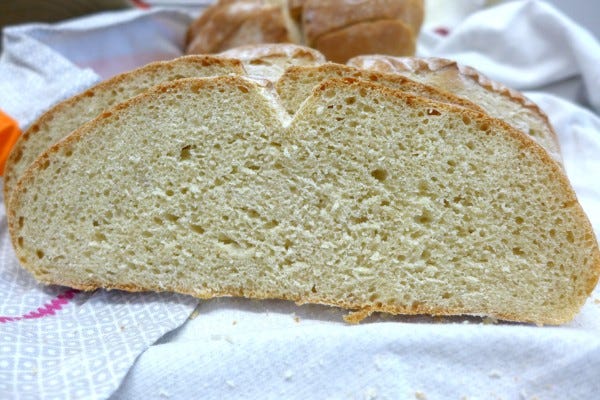June is a mixed-bag month - the herald of summer yet, come the 21st, it signals that half the year is already over and Christmas on the approach again. Suddenly depressed? Don’t be. It’s also the month when local fruits and berries tumble onto farmers-market stalls, scenting the air of the streets. Nostrils flaring, we abandon thoughts of the pies and crumbles we made during winter which worked to disguise the poor quality or tedium of the only fruit available then for us to eat.

We’re now into the season where we should stop meddling with fruit and allow it to shine on its own, or at most sprinkle it with sugar and maybe dribble it with cream. But if you do want to tizzy it up a bit, a good fool is the way to go. Despite its derogatory name, a fool is a useful trick for improving fruits such as apricots which may not be quite ripe, or stretch the fruit to feed more people.
The original word ‘foole’ may look French. But it is undoubtedly a traditional English dessert. The pudding is first mentioned in 1598 although there is a suggestion that the gooseberry fool - that most classic of fool flavours - may go back further, to the 15th century.
Sadly, gooseberries seem to have fallen out of fashion in our supermarkets. In the US, the growing of them, like growing blackcurrants, is prohibited in some states. Certain species are hosts to a disease that attacks the white pine, a tree the timber industry in those states is dependant upon. In the UK if you want gooseberries, you pretty much have to grow your own or haunt high-end fruiterers for their limited supplies.
But also associated with fools are rhubarb, blackberries, blackcurrants, raspberries (though less commonly strawberries), apricots, even apples. Dried fruits, such as Pruneaux d’Agen or other good quality prunes that have been macerating for weeks in expensive Armagnac or cheap port (indistinguishable, if you ask me), make a marvellous fool.
Mango fool is almost a staple in India. If you want to make it, and why not, it works better with tinned Alphonso mangoes than with fresh ones. In my Moscow days, the dessert popular at dinner parties thrown by the Middle East diplomatic community was a fool made with tinned mango pulp plus a vital American product imported for the purpose from Helsinki: Cool Whip. You’d never have guessed it was in it. If you want to try the recipe and can’t get hold of Cool Whip, use whipped cream:
Melt 2 small packets of lemon jelly - Jello - in one cup of boiling water. While still unset, beat into it 1 can of mango pulp, then just over half an 225g/8oz carton Lite Cool Whip. Chill to set.
Although the 1598 mention of the ‘foole’ talks of it being made with ‘clouted cream’, traditionally a fool was a puree of stewed fruit folded into a rich egg custard. These days, we have reverted to whipped cream, sometimes flavouring it with rose water, orange water, cinnamon or nutmeg, depending on which fruit is used.
No-one quite knows where the name ‘fool’ came from. The Oxford English Dictionary firmly rejects the suggestion it comes from the French verb ‘fouler’, to crush or press, arguing it bears no relation to the early use of the word. But it doesn’t come up with an alternative.
The first recorded mention of the fool comes from Robert May. Born in 1588 into a family of cooks in Buckinghamshire, he was a cook from the age of ten to the English Roman Catholic aristocracy of the day. In 1660, he published the enormous and wide-ranging The Accomplisht Cook, the first cookbook to group recipes into sections - twenty-four of them. It was one of the few cookery books published during the Commonwealth of Oliver Cromwell and went big on recipes for two exciting new food imports from the Americas to Europe, the potato and the turkey.
His recipe for fool is unusual. He calls it the Norfolk Fool. It’s an odd recipe, mostly focused on a manchet, which was a flat loaf of wheat bread small enough to be held in the hand or glove, giving it its French-derived name.
He slices it and covers it in a thick boiled cream and egg custard with the fruit almost an afterthought. It’s more like a bread-and-butter pudding than a fool. If you want to give it a try, this is his recipe:
Take a quart of good thick sweet cream, and set it a boiling in a clean scoured skillet, with some large mace and whole cinamon; then having boil'd a warm or two take the yolks of five or six eggs dissolved and put to it, being taken from the fire, then take out the cinamon and mace; the cream being pretty thick, slice a fine manchet into thin slices, as much as will cover the bottom of the dish, pour on the cream on them, and more bread, some two or three times till the dish be full, then trim the dish side with fine carved sippets, and stick it with slic't dates, scrape on sugar, and cast on red and white biskets.
If you have children in need of entertainment, a regular fruit fool is a good way to start them on cooking. It’s a very quick and easy recipe to make and produces a delicious bowl for them to lick clean.
To serve 4, use 450g/16oz of any fruit to 400ml/14fl oz of double/heavy cream, or, for a lighter version, 300ml/10fl oz of cream with 100ml/3½fl oz strained Greek yogurt, and 4-5 tablespoons of sugar or more to taste.
Put the fruit in a medium pan with four tablespoons of sugar. Unless you’re using raspberries, in which case just let your berries macerate in a bowl for an hour or more until the juices release, set the pan on a medium-low heat and cover. Cook gently until the fruit is soft. If it is surrounded by juice, take off the lid, turn up the heat slightly and leave it to bubble away until some of the juice has evaporated and the puree has thickened. Taste the cooked fruit and add more sugar if necessary. Lightly mash with a fork or, for a smoother finish or to eliminate the seeds in raspberries or blackberries, place a sieve over a bowl and press the fruit through it. Pour the cream into a large bowl and whisk it into soft, floppy peaks.
Lightly fold the cooled fruit into the cream for a rippled effect or more completely if you prefer a fully integrated fool. But take care not to deflate it with a forceful action that knocks the air out of the cream.
Serve with some delicate biscuit.








Back in the days when I was still making a fool of myself (pun deliberate) in front of audiences and cameras, I did a t.v. commercial for Cool Whip. It was supposed to be late at night. I was dressed in a bathrobe with spoon in hand and an eager expression on my face, revealed when I opened the refrigerator door--the camera was set where the back of the appliance should have been. There was a dish on the top shelf with a large mound of Cool Whip on top. I took a heaping spoonful, put it in my mouth, swooned, and closed the door. I'm not sure why--the lighting or something--but many, many takes were required. Probably because the director wanted the client to believe that the huge fees involved were justified. I could have managed a take or two, but we kept going and going--twenty takes or more-- and I spat the artificial vanilla-flavored goo into a towel after every "Cut!" was called. It took considerable acting skill to look like I was enjoying it. I've never knowingly eaten Cool Whip since that day.